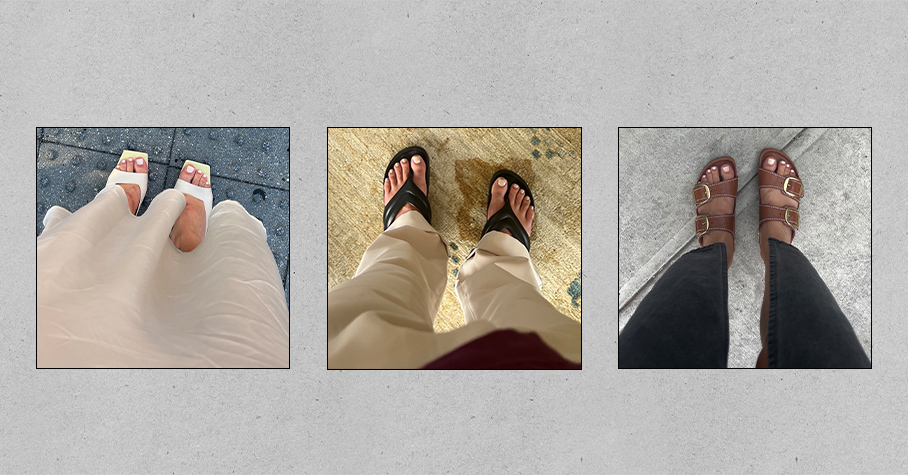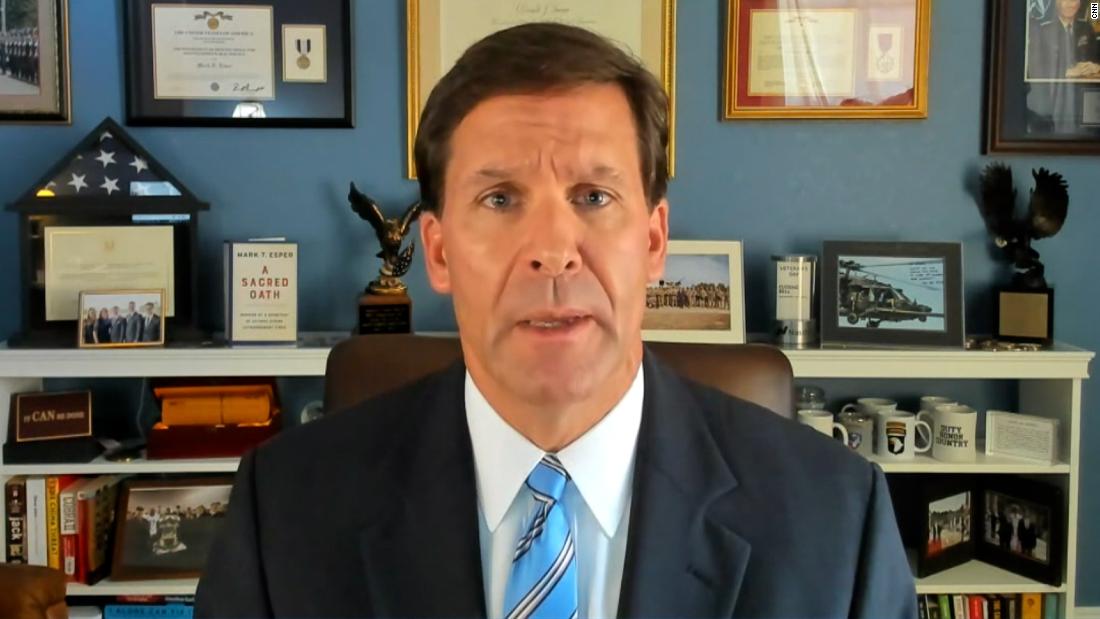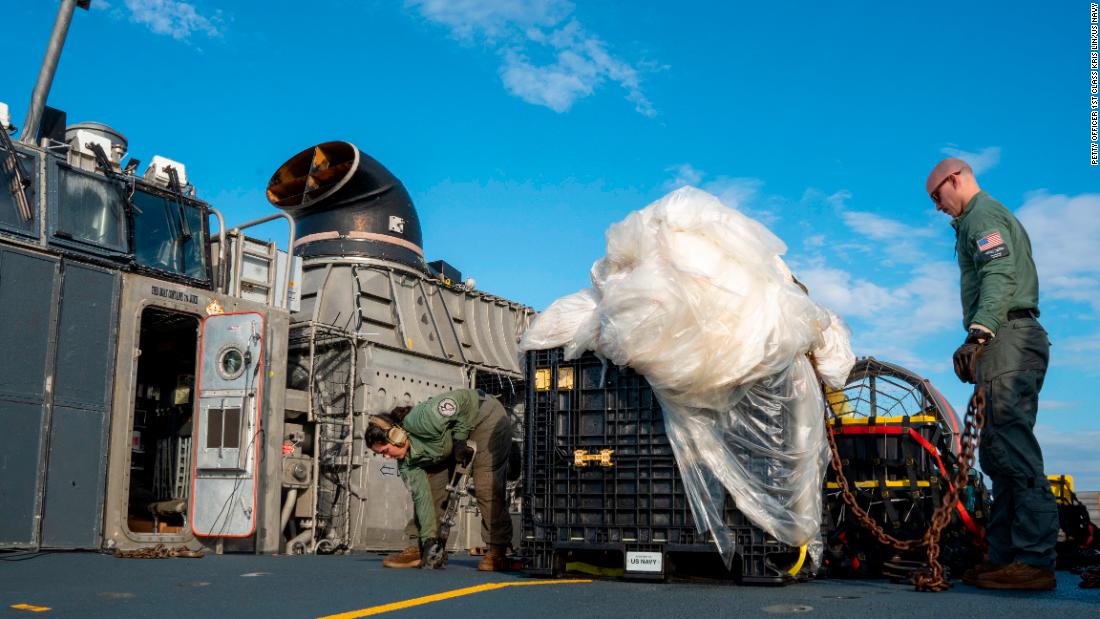America’s Rocky Road to Justice-Informed Policing
The George Floyd killing forced white Americans to confront awkward truths about racial disparities in the justice system, and the police role in enforcing those disparities. In the latest installment of the Harry Frank Guggenheim Foundation’s “At the Crossroads” series of interviews, criminologist and former prosecutor Kami Chavis argues the entire police “ecosystem” needs reform―starting at the local level.

In the aftermath of the killing of George Floyd in Minneapolis, protesters took to the streets in many American cities to condemn police brutality. Some places also suffered from widespread looting and property destruction that will take years to restore.

Kami Chavis
Little of this came as a surprise to Kami Chavis, the director of the criminal justice program at Wake Forest University School of Law. A former federal prosecutor, Chavis has spent the bulk of her academic career focusing on issues of police accountability and racial justice.
When Michael Brown was killed in Ferguson, Mo., Chavis wrote: “This is a pivotal moment in our nation’s history, and every police chief in America should be asking: ‘How do I ensure that I maintain the integrity of my department and earn the trust and legitimacy of my community?’”
The sense of urgency has only increased since then.
In an interview with Greg Berman, Distinguished Fellow of Practice at The Harry Frank Guggenheim Foundation, Chavis talks about issues of police reform and the relationship between police violence and the recent increase in shootings in many American cities.
This transcript has been edited for length and clarity.
GREG BERMAN: I want to start by asking you about your time as a prosecutor. How did that experience shape you?
KAMI CHAVIS: I was only a prosecutor for three years, but the experience definitely shaped my scholarship and teaching. It was one of the reasons I entered academia. I did a lot of domestic violence, guns, and drug cases at the U.S. Attorney’s Office in Washington, DC. I had a very busy caseload. It really put me face-to-face with how vulnerable some people and some communities are, not only to violence but also to the criminal justice system itself.
There were just so many disparities that I saw within our criminal justice system. As wonderful as our U.S. criminal justice system is, I just saw a lot of times where, quite frankly, it fell short. You would look at a person and see all the times that they had been arrested or convicted. Is the criminal justice system really the only response that we have for this individual’s actions? I guess I would say I saw the criminal justice system being overused.
Before I became a prosecutor, I was certainly aware of the role that race has played since the inception of our country. We’ve always punished marginalized communities more harshly. So I can’t say that what I saw when I was a prosecutor was a surprise; but I can say that it was very different being a part of that system. It was very weighty for me, the power that I had, even as a young, inexperienced prosecutor, really to change the trajectory of someone’s life.
BERMAN: You have said that we are in the midst of a criminal justice revolution in this country. Are you optimistic or pessimistic about how things are going?
CHAVIS: At the time that I wrote that, there had been a number of high-profile shootings of unarmed Black people—Michael Brown, Freddy Gray, Philando Castile, Keith Lamont Scott here in Charlotte. I can name others across the country.
This had been something that, of course, had been happening for decades. Black communities were very familiar with the tension that existed between police and their communities. But it seemed like the rest of America had awakened and recognized these problems. The body-camera footage and cell-phone footage corroborated what had been happening all along. So that was very powerful. And people were really spirited about the need for change and for reform.
You asked me whether I’m optimistic or pessimistic. I’ll say that I am cautiously optimistic because I think what this era—the George Floyd era—has done is really elucidated the need for local reform and how local communities really are going to drive this reform. Certainly federal legislation is important. But in the wake of what happened to George Floyd, a lot of local communities enacted some really important changes, whether it was banning certain use-of-force tactics or requiring greater transparency, those kinds of things. These are small, incremental steps. We are still a long way from transformative reform in policing, which is really going to require us to think about our use of the criminal justice system to deal with so many social problems.
BERMAN: Help me understand the scale of the problem. Some people say that we have an epidemic of police violence in this country. Others say that, if you actually look at the numbers, very few unarmed Black people are killed by the police each year. I’m curious to hear your sense of how big a problem we’ve got in this country.
CHAVIS: Oh, my gosh. I think we have a huge problem. I would say that if you have one unconstitutional violation, one preventable death, it’s one too many.
BERMAN: Do you think that we can realistically get to zero preventable deaths?
CHAVIS: I think we should try to get to zero but I don’t think we’ll get to zero, because I don’t think that we will be able to enact the policies and cultural change to get there.
But to answer your question about the scope of the problem, it’s not just about the number of people that are being killed. It’s the number of people who are impacted at every point in our criminal justice system. Who do the police stop? Who do they search? Who do they decide to arrest? Who do the prosecutors decide to charge? How severe are those charges? What sentence do they receive? We see disparities in every single aspect of our criminal justice system. So, to me, it is endemic. And policing is the entry point for all of that.
I think that the scope of the problem really is understated. One reason I say that is because we really don’t keep great statistics. For a long time, it was the Guardian, a British newspaper, that was one of the most reliable sources to figure out how many Americans had been shot by police. Thankfully, that’s improved. There are now other groups keeping track of that.
But I think that we’re still underestimating the disparities that happen all throughout the criminal justice system—and the effects that those disparities have on the legitimacy of our system. Black Americans and white Americans view our criminal justice system very differently. When you have that type of divide, it’s ultimately going to impact the legitimacy of your entire system.
BERMAN: Help me parse what role implicit bias plays in all of this. I’ve been to a number of implicit bias presentations and I generally have found them to be pretty persuasive. On the other hand, I have read that the implicit association test is useless and that there’s no indication that implicit bias training makes a difference. So I’m kind of confused about how to think about implicit bias.
CHAVIS: I think implicit bias certainly plays a role in some of the disparities that we’re seeing. But I also think we have explicit bias that we haven’t really dealt with. Our case law really protects officers and other actors in the criminal justice system because the standards are so high for making an equal protection claim. You have to show intentional discrimination. Even if it exists, it can be very difficult to prove. Our laws and our standards also allow pretextual stops to occur. And so before we even get to implicit bias, I think that we have a problem with how we deal with explicit bias.
BERMAN: You’ve called President Obama’s Task Force on 21st-Century Policing a missed opportunity. Why was that?
CHAVIS: This was a national conversation that was taking place in the wake of a spate of shootings of unarmed African American men. There were so many experts convened, so much information. You had some of the greatest law enforcement officials themselves who were involved in this, as well as renowned scholars.
There’s a lot of good information in that report. For example, they talked about technology in law enforcement and how we have to be careful about how those technologies might be used. They basically forewarned about some of the things that people are talking about today, in terms of gun-shot detection software and aerial surveillance and how that’s deployed.
That document contains a wealth of ideas about how to improve policing. And they made some very good recommendations that we still haven’t been able to codify. It would have been great to see a lot of local police departments adopt some of these principles internally.
BERMAN: You mentioned that police were engaged in shaping the Obama reform agenda. Just to play devil’s advocate for a second, if police are the problem, why do we need to engage them in the reform process?
CHAVIS: Oh, my goodness, that’s just a basic principle of stakeholder participation. If you have top-down policies and you want to implement them without the input and advice and expertise of the people that are very close to the problem, you’re not going to get great solutions. And not only are you not going to get workable solutions; you’re also not going to get the buy-in that you need to sustain any reform that you put into place.
We say that police are the problem. Actually, I don’t think it’s all police that are the problem. I think that a fraction of police officers engage in these negative behaviors. There are a number of police officers and police executives around the country who also think that our system needs to change. I think if you were to ask any number of police officers, they would tell you that their role has expanded unreasonably and what they are tasked with doing on a day-to-day basis has an impact on their morale, their mental health, their ability to do their jobs effectively. And so I think that we do have to involve law enforcement in the conversation about reform.
BERMAN: I recently talked to Andy Papachristos from Northwestern, who has done research that echoes what you just said, which is that when you’re talking about the worst kinds of police misbehavior, you really are talking about a handful of officers in any given department. But of course many progressive reformers reject talk of “bad apples” because they think this obscures the need for structural change.
CHAVIS: I want to make a distinction. I don’t think it’s just an issue of a few bad apples. What I think is that there’s a lack of accountability for bad actors. We cannot overestimate the role that police culture plays in police misconduct. Even if you have one or two officers within a department that are causing the problem, they are part of an ecosystem. Their actions can really harm the entire department.
How do we deal with these officers? In my opinion, I don’t think you can train away bias. We have to figure out a way to get rid of people who have shown a propensity for violence. When we keep officers in the ranks that are doing these things, that’s very problematic.
BERMAN: President Biden comes to you and asks you to lead an updated version of the Obama task force on policing. If the goal is to change the culture of police, what’s your best guess on where we should be focusing our energies at this point?
CHAVIS: I don’t think that there’s just one thing. I’ve always said that there’s a wide array of tools available to solve this problem. It’s not going to be one single thing. I think the first thing we need to do is to rethink the role of police in society. I don’t think we need police officers to engage in all of the roles that we’re currently asking them to engage in. Do we need an armed first responder for every police call? We don’t.
So I think the first thing we have to do is to rethink the role. And then I think that we have to have clear policies and procedures that elevate human life over some of these small criminal violations. Nobody should ever need to break down the door of someone’s home in the middle of the night just to serve a drug warrant. We have to weigh the value of human life against the value of a few grams of cocaine. That happened here in North Carolina, in Elizabeth City. Seven armed sheriff’s deputies came to execute a warrant for something like three grams of cocaine. The guy’s dead now. Why are we doing this? It doesn’t make sense to me.
We know that police officers can show great restraint. We saw that on Jan. 6. No matter what you think about that event, I know I saw lots of people disobeying law enforcement orders and breaking down barricades and entering and trespassing into a building, and we did not have mass casualties. So that shows me that police can exercise restraint. It’s just they choose not to in certain circumstances. We need to value Black lives in the same way that we value others.
BERMAN: Do you think there’s a link between the kinds of police violence that we’ve been talking about and the gun violence that we see in the streets of American cities?
CHAVIS: I think that they’re both very complex problems with long histories. But I do think that there is a connection that we need to explore if we’re going to address either of them effectively. The first thing to say is that the gun culture in our country endangers everyone. Police officers don’t know who’s armed and who is not. So that plays a role.
When you have the type of police misconduct that we’ve seen, it delegitimizes our entire criminal justice system. And so you won’t have the community partners that you need in order to prevent and address the violence that’s happening. People don’t necessarily want to turn someone in or to help in an investigation. There are instances where people have tried to be helpful, and then they themselves have been arrested or made a suspect. And so there are legitimate fears in some communities.
If there’s massive distrust, you’re not going to have the partnerships and collaboration that you need to address these other underlying issues. And it can actually exacerbate problems because perpetrators can move about freely without fear that someone in the community is going to cooperate with police in an investigation against them.
BERMAN: When I spoke with David Weisburd, he talked about how crime tends to cluster in a handful of locations within a neighborhood. We also know that crime tends to cluster among a discrete handful of people. I’m wondering how you think about hot-spot policing and efforts to target individuals who are at high risk of committing violence. Do you have any concerns that these kinds of strategies might exacerbate racial disparities?
CHAVIS: I think that it is true that when we look at what we would call a high-crime area, usually you can identify the drivers of that crime. You don’t have a community of people who are all engaging in criminal behavior. It’s usually a small number of people who are having a really big effect.
But we have to be very careful with hot-spot policing or predictive policing because one thing that we know is that [with] a lot of the algorithms used to determine whether an area is high-crime or not, the underlying data is biased, because communities aren’t policed in the same way. We know that there’s an over-enforcement of certain crimes in certain areas. We know that whites and Blacks use drugs in the same proportion. But there’s a disparity when you look at the people who have criminal convictions for possession and things like that. People in marginalized communities are having disparate outcomes.
So my point is that when it comes to hot-spot policing, you’re using data that could be potentially biased. If we’re talking about predictive policing, we know that these algorithms are proprietary. So we don’t even know how they are making this determination.
I also worry about what happens when an officer goes into an area that’s been identified as a hot spot. You’re going to go into that area with a different mindset than you would in another area. You’re automatically going to put on your warrior hat rather than your guardian hat. Is everyone you see a potential threat to you? I worry about that and the implications that it could have.
BERMAN: In 2016, you played a role in putting together a report on engaging communities in reducing gun violence along with the Joyce Foundation, the Joint Center for Political and Economic Studies, and the Urban Institute. That report included a survey. Half of Black respondents ranked police misconduct as an extremely serious problem, whereas 80 percent ranked gun violence that way. How do you read those results looking backward? Do you think we’d get the same results if that survey were done again today?
CHAVIS: I don’t know. I can’t really speculate. We often try to be dichotomous about these issues. I’ve always said that respecting the civil rights of people is not mutually exclusive to effective law enforcement. I think you can have both. You can investigate and prevent crimes and you can do so constitutionally. And it really is disappointing to constantly hear it framed in this dichotomous manner. If you critique the police, then you’re anti-police. If you don’t believe in “defund the police,” or if you want to address gun violence, then you are pro-police.

Greg Berman
I think the survey results indicate that communities are concerned about violence in their streets, but they are also concerned about the way in which they are policed. The thing that we learned from that survey is that people didn’t necessarily not want police. They want police to really focus on community priorities. They want police to focus on violent crime. Our communities are not simplistic or monolithic. How I read those surveys is that both police misconduct and gun violence are important issues to address.
Greg Berman is Distinguished Fellow of Practice at The Harry Frank Guggenheim Foundation where he writes At The Crossroads. He previously served as the executive director of the Center for Court Innovation for 18 years. His most recent book is Start Here: A Road Map to Reducing Mass Incarceration (The New Press). This article is published with permission from the Harry Frank Guggenheim Foundation. Views expressed are the participants’ own and not necessarily those of the Foundation.
The previous article in the series, an interview with Chicago criminologist Andrew Papachristos, can be accessed here. Click here to see the entire series to date.

 Landwebs
Landwebs 
























